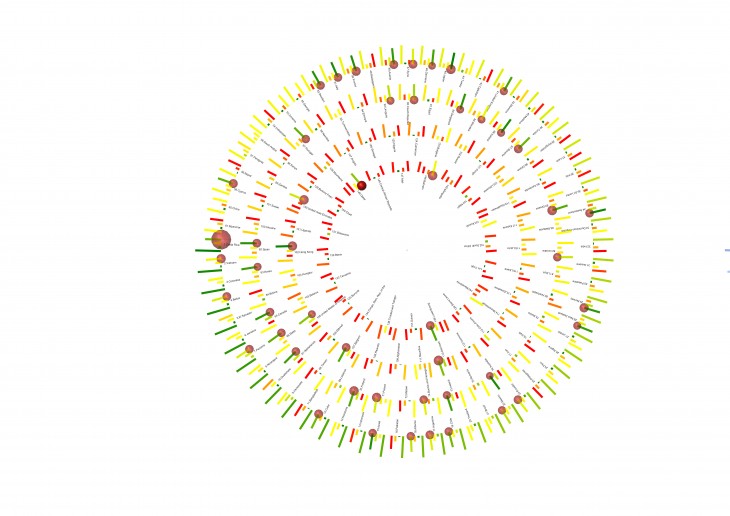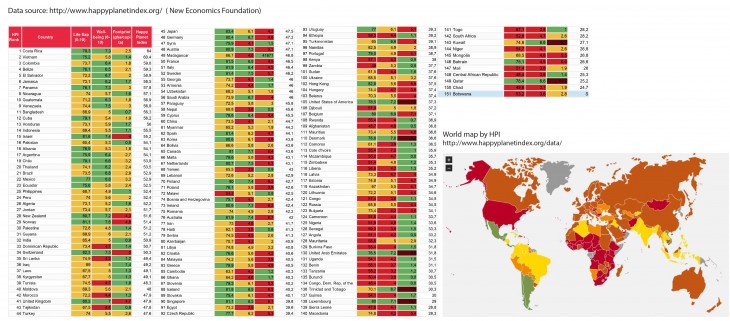The Happy Planet Index (HPI) introduced by the New Economic Foundation (NEF) ranks 151 countries across the globe on the basis of how many long, happy and sustainable lives they provide for the people that live in them per unit of environmental output. Put another way, it represents the efficiency with which countries convert the Earth’s finite resources into well being experienced by their citizens.
The Global HPI incorporates three separate indicators:
1. Ecological footprint (the amount of land needed to provide for all their resource requirements plus the amount of vegetated land needed to absorb all their CO2 emissions and the CO2 emissions embodied in the products they consume)
2. Life satisfaction (health as well as “subjective well-being” components such as a sense of individual vitality, opportunities to undertake meaningful, engaging activities,
inner resources that help one cope when things go wrong, close relationships with friends and family, belonging to a wider community)
3. Life expectancy
The diagram represents 151 countries according to their position in the list.
The outer circle shows top 61 countries, inner circles represent countries with lower HPI.
Color code :
life expectancy, well-being and ecological footprint are given a traffic-light score based on thresholds for good (green), middling (yellow) and bad (red) performance. These scores are combined to an expanded traffic light for the overall HPI score, where, to achieve bright green a country would have to perform well on all three individual components.
*Red spheres display countries with life expectancy more 75 years




